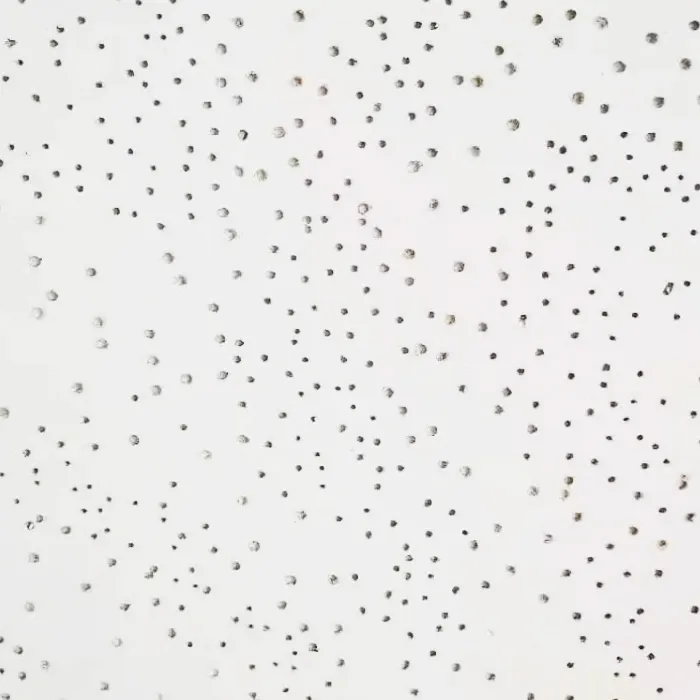Nov . 19, 2024 09:18 Back to list
suspended ceiling tees
Understanding Suspended Ceiling Tees An Essential Component in Modern Architecture
Suspended ceiling tees play a pivotal role in contemporary architectural designs, particularly in commercial and industrial buildings. They serve as the framework upon which suspended ceilings are installed, providing not only structural integrity but also aesthetic appeal and functional benefits. This article delves into what suspended ceiling tees are, their types, benefits, and installation considerations.
What are Suspended Ceiling Tees?
Suspended ceiling tees, often referred to as T-bars or grid systems, are metal framework components used to support acoustic tiles or panels in a suspended ceiling system. The design typically resembles the letter T, hence the name. These tees are installed perpendicular to the main runners or cross tees, creating a grid that holds the ceiling tiles in place.
The materials used for suspended ceiling tees vary but are commonly made from galvanized steel or aluminum to ensure durability and resistance to corrosion. The standard size of these tees is typically 24 inches in length, which aligns perfectly with common ceiling tile dimensions.
Types of Suspended Ceiling Tees
Suspended ceiling tees can be categorized into two primary types
1. Main Runners These are the long support members that run along the length of the ceiling, acting as the primary structural framework. Each main runner is connected to the building's structural elements, providing strength to the ceiling system.
2. Cross Tees These are shorter tees that connect the main runners to create a grid pattern. Cross tees are installed perpendicular to the main runners, and they help in supporting the ceiling tiles.
Additionally, there are speciality tees, such as those designed for specific lighting fixtures or air conditioning units, which integrate seamlessly into the grid system.
Benefits of Using Suspended Ceiling Tees
1. Aesthetic Flexibility One of the main advantages of suspended ceilings is their versatility in design. Different ceiling tiles can be used to create various finishes, textures, and colors, allowing architects and designers to achieve the desired aesthetic effect.
suspended ceiling tees

2. Improved Acoustics Many suspended ceiling tiles, paired with tees, are designed to improve sound absorption. This is particularly important in commercial spaces like offices, schools, and hospitals, where noise reduction is crucial for comfort and productivity.
3. Easy Access to Utilities Suspended ceiling systems create a void between the ceiling and actual ceiling structure, providing access for plumbing, electrical, and HVAC systems. This means maintenance and repairs are easier to perform without the need for significant structural changes.
4. Energy Efficiency The use of suspended ceilings can contribute to a building's energy efficiency. Insulated ceiling tiles help regulate temperature, reducing the load on heating and cooling systems.
5. Fire Safety Many suspended ceiling systems include fire-resistant materials that can delay the spread of fire within a building, enhancing safety.
Installation Considerations
Installing suspended ceiling tees requires careful planning and attention to detail. Here are essential considerations
- Height of the Ceiling The available height determines how low the suspended ceiling can be. Ensure that it meets any building codes or regulations. - Load-Bearing Capacity Assess the weight of the ceiling tiles and any additional fixtures that will be suspended from the tees. Proper calculations must be made to ensure that the tees can support the total load without risk of collapse.
- Grid Layout Planning the layout of the tees is crucial. The typical configuration involves placing tees 24 inches apart, aligning with the size of the ceiling tiles. A well-planned layout helps avoid wastage of materials and ensures a seamless finish.
- Inspection and Maintenance Once installed, regular inspections should be conducted to check for loosening or misalignment of the tees, ensuring the longevity of the suspended ceiling system.
Conclusion
Suspended ceiling tees are indispensable in modern architectural practices, offering a blend of functionality and aesthetic appeal. Understanding their types, benefits, and installation process is crucial for designers, architects, and builders. As buildings continue to evolve, these components will remain vital in creating attractive, efficient, and functional spaces. By embracing the advancements in suspended ceiling technology, we can ensure that our environments are not only beautiful but also conducive to productivity and comfort.
-
Durable Ceiling T Grid Systems | Easy InstallationNewsAug.29,2025
-
PVC Gypsum Ceiling: Durable, Laminated Tiles for Modern SpacesNewsAug.28,2025
-
Pvc Gypsum Ceiling Is DurableNewsAug.21,2025
-
Mineral Fiber Board Is DurableNewsAug.21,2025
-
Ceiling Tile Clip Reusable DesignNewsAug.21,2025
-
Ceiling T Grid Modular DesignNewsAug.21,2025







